Tag archives for: David McFadden
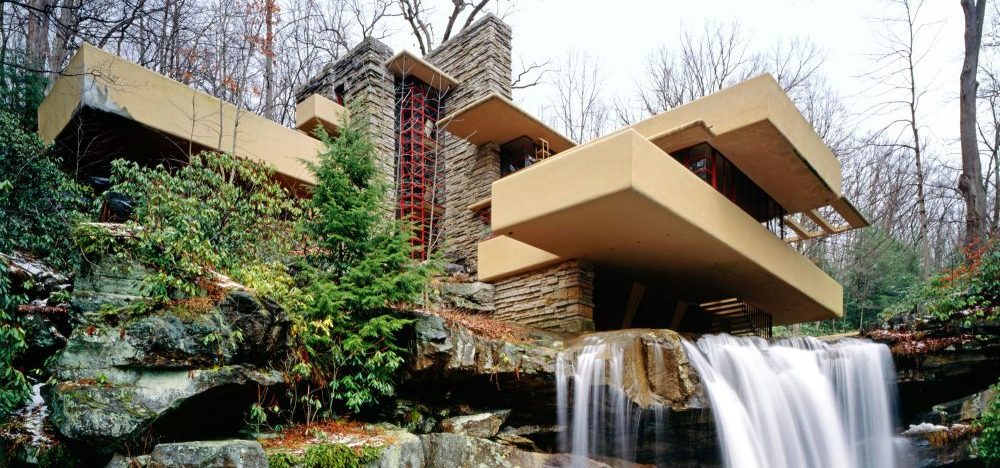
This article marks the second in my series that explores renowned historical buildings, speculating on integrating contemporary sustainable materials and energy-efficient measures not initially available during their construction to achieve Platinum LEED Certification. In this installment, we gaze on Frank Lloyd Wright’s iconic Fallingwater, erected in 1935. David.
Introduction
Frank Lloyd Wright’s Fallingwater is a gem of American architecture, a 1935 creation that continues to captivate admirers today. Yet one question beckons: what would it take to qualify this iconic structure for Platinum LEED Certification using today’s sustainable materials and energy-efficient measures? In this blog post, we’ll precisely explore that.
The 1935 Reality
When Fallingwater was built, the materials available represented the best that 1935 had to offer—steel, concrete, and glass made using energy-intensive methods, with little thought to environmental impact.
A 2023 Vision
Imagine applying today’s sustainable construction techniques and materials to elevate this iconic structure. For the reader’s benefit, let’s explore real-world examples of how various materials have evolved and can contribute to a more sustainable Fallingwater.
Solar Panels and Green Roofing: The Future of Clean Energy
Fallingwater was conceived before the advent of solar panels and green roofing. Today, these technologies are integral to achieving Platinum LEED Certification. High-efficiency solar panels could convert ample sunlight into clean energy, significantly reducing the building’s reliance on nonrenewable power sources. A green roof would act as a natural insulator and manage stormwater, decreasing the building’s environmental impact.
Advanced Glazing and Insulation: Harnessing Energy Efficiency
In 1935, the energy-efficient, low-emissivity (LowE) glass and high-performance insulation materials we have today weren’t even a thought. Retrofitting Fallingwater with modern glazing can drastically improve its thermal performance, keeping interiors cool in the summer and warm in the winter. Such advancements go a long way in reducing energy consumption, an essential criterion for Platinum LEED Certification.
Smart Building Systems: Intelligent Resource Management
Intelligent building systems like automated lighting and HVAC controls are a far cry from what was available in the 1930s. By incorporating smart technologies, we can achieve real-time energy monitoring and automatically adjust settings to optimize resource consumption.
Water Efficiency Measures: The Future is Now
Incorporating water-efficient fixtures and rainwater harvesting systems can substantially reduce water usage. Low-flow toilets, faucets, and a rainwater collection system for non-potable uses make the structure more sustainable and contribute to Platinum LEED Certification requirements.
Sustainable Building Materials: The Eco-Friendly Choice
The original construction materials were constrained by what was available in 1935. Today, we can opt for eco-friendly alternatives such as reclaimed wood, recycled steel, and low-VOC finishes. These have a lower environmental impact and contribute to a healthier indoor environment.
Conclusion
The opportunity to marry Fallingwater’s timeless design with the advances in sustainable building materials and techniques offers an exciting avenue to protect and elevate this masterpiece for future generations. Technology exists; all it takes is the will to apply it. By doing so, we pay homage to Frank Lloyd Wright’s original vision for Fallingwater and adapt it to meet the challenges and opportunities of the 21st century. Thus, we can transform Fallingwater into a monument of the past and a model of sustainable living for the future.
While Fallingwater remains an architectural marvel, it’s intriguing to consider how it could meet today’s sustainability standards. With modern advancements in clean energy, insulation, Smart Building Systems, water efficiency, and sustainable materials, this iconic building could preserve its historical significance and symbolize environmental responsibility. Retrofitting these features would elevate it to Platinum LEED Certification status, marrying its timeless design with today’s eco-conscious ethos.
About Consulting For Architects, Inc. Careers (CFA)
Helping architects, interior designers, and building design professionals find better career opportunities nationwide every day since 1984. Send your resume and portfolio to [email protected].
Sources and Acknowledgments
This article was crafted using the author’s original ideas, research data, insights from personal and professional experience, and an assist from ChatGPT, a large language model developed by OpenAI. For more details, refer to OpenAI. (2023). ChatGPT (August 3 Version).
Architecture: Sustainability Revisited
|
21stCenturyDesign, architects, ArchitecturalConservation, ArchitecturalInnovation, architecture, CleanEnergy, Consulting For Architects, David McFadden, EcoFriendlyDesign, EnergyEfficiency, EnvironmentalResponsibility, FrankLloydWright, GreenBuilding, HistoricPreservation, jobs, LEEDCertification, ModernConstruction, SmartBuilding, SustainableArchitecture, SustainableMaterials
|
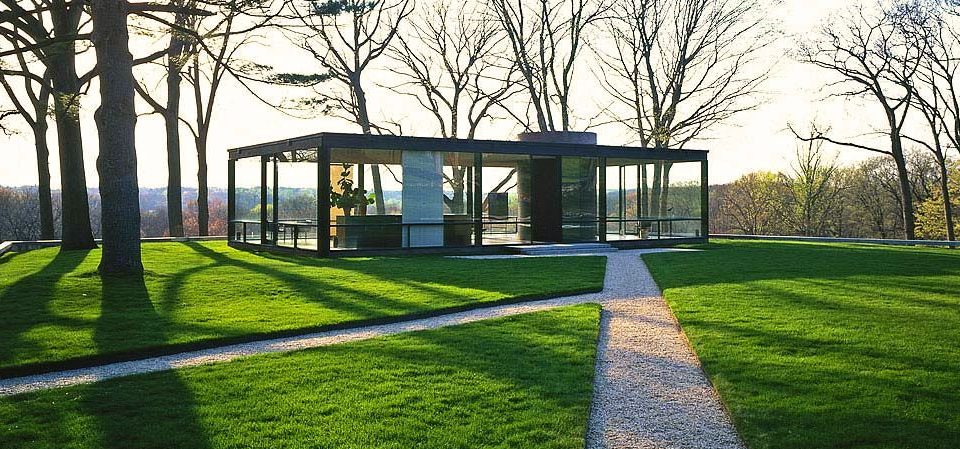
Introduction
Philip Johnson’s Glass House is a timeless architectural masterpiece renowned for its minimalist elegance and groundbreaking design. Constructed in 1949, this iconic structure was ahead of its time, yet sustainability and energy efficiency were not focal points in the mid-20th century. In this blog post, we’ll explore modern sustainable materials and energy-efficient measures that could be applied today to qualify the Glass House for Platinum LEED Certification—boosting its appeal in the eyes of contemporary environmentally-conscious audiences.
1. Solar Panels and Green Roofing: Harnessing Clean Energy
One of the most influential advancements in sustainable architecture since 1949 is the integration of solar panels and green roofing systems. With today’s highly efficient and cost-effective solar technology, it’s now possible to generate clean energy from the sun. We can significantly reduce its carbon footprint and overall energy consumption by installing solar panels on the Glass House’s roof and surrounding landscape. Incorporating a lush green roof covered in vegetation provides natural insulation and helps reduce stormwater runoff, further enhancing the building’s thermal performance.
2. Advanced Glazing and Insulation: Energy Efficiency at Its Best
The Glass House was an innovative structure for its time, featuring glass walls. However, with the advancements in modern glazing and insulation technology, energy efficiency has reached new heights. High-performance, low-emissivity (Low-E) glass now allows for optimal temperature control by reducing heat gain in summer and heat loss in winter. This, combined with triple-glazed windows and advanced framing materials, enhances insulation and creates a comfortable indoor environment while minimizing the need for excessive heating and cooling.
3. Smart Building Systems: Efficiency in Every Corner
Today, smart building systems offer precise control over various aspects, including lighting, HVAC (heating, ventilation, and air conditioning), and other utilities. Integrating these systems into the Glass House ensures real-time energy use monitoring and adjustment. Features like occupancy sensors, automated shading systems, and energy-efficient LED lighting optimize resource usage and maintain the Glass House’s aesthetic appeal.
4. Sustainable Building Materials: Eco-Friendly Choices
Achieving LEED Platinum certification requires the use of sustainable building materials. The Glass House could be retrofitted with less environmentally impactful materials, such as reclaimed wood, recycled steel, and non-toxic finishes. Additionally, sourcing these materials locally further reduces transportation emissions and supports the local economy.
5. Rainwater Harvesting and Water Efficiency: Resource Conservation
Incorporating rainwater harvesting systems and water-efficient fixtures further enhances sustainability. Capturing rainwater for irrigation and non-potable uses reduces the demand for municipal water supplies. Moreover, including low-flow toilets, faucets, and water-efficient landscaping minimizes water consumption.
Conclusion
Philip Johnson’s Glass House, a 1949 architectural gem, is still captivating with its timeless design. However, with today’s advancements in sustainable materials and energy-efficient technologies, we can elevate it to Platinum LEED Certification status. By embracing solar panels, green roofing, advanced glazing, smart building systems, sustainable materials, and water efficiency measures, the Glass House preserves its historical significance. It stands as a symbol of sustainability and innovation. This reimagined Glass House is a testament to harmonizing timeless design with cutting-edge environmental stewardship—an alluring combination for modern eco-conscious enthusiasts.
Consulting For Architects, Inc. Placement
Helping architects, interior designers, and building design professionals find better career opportunities nationwide every day since 1984. Send your resume and portfolio to [email protected]
Architecture: Sustainability Revisited
|
architecture, Consulting For Architects, David McFadden, design, EnergyEfficiency, GreenBuilding, HistoricPreservation, InnovationInDesign, LEEDCertification, ModernDesign, PhilipJohnsonGlassHouse, SolarPower, SustainableArchitecture, SustainableMaterials
|

An article published yesterday in Popular Mechanics titled, Saudi Arabia Is Building an Entire City in a Straight Line. It Makes Zero Sense, subtitled, Basic math says the city should actually be The Circle, not The Line written by Darren Orf makes an interesting mathematical argument but urban planning is so much more – closer to an expression of art with a small dose of mathematics.
I have written a response considering other factors.
While the argument presented in the Popular Mechanics article raises valid concerns about “The Line” city project’s straight-line design, it’s essential to provide a counterargument that considers the potential benefits and unique aspects of this innovative urban development:
1. Efficiency and Transportation: The straight-line design of “The Line” offers the advantage of efficiency in transportation. A high-speed rail system connecting the entire city can significantly reduce commuting times, making it more convenient for residents to move from one end of the city to the other. This can enhance overall productivity and accessibility, especially in a city as extensive as The Line.
2. Environmental Sustainability: The article acknowledges the project’s purported low environmental impact, which is a significant consideration in modern city planning. The concentration of buildings and infrastructure in a narrow, linear corridor can reduce the environmental footprint compared to a circular city design, where infrastructure might extend over a larger area, impacting more natural habitats.
3. Resource Optimization: The linear layout of The Line may allow for better resource optimization. Services such as waste management, utilities, and public transportation can be more efficiently organized in a linear city, potentially reducing operational costs and environmental impact.
4. Innovation and Technology: The Line’s driverless and car-less approach represents a forward-thinking commitment to cutting-edge technology. This approach aligns with the global trend toward sustainable and autonomous transportation solutions, which can reduce traffic congestion and emissions.
5. Unique Urban Planning: The Line’s unique design can be an attraction in itself. Just as the initial presentation resembled concept art for a sci-fi film, it can create a distinctive and futuristic identity for the city, drawing international attention and investment.
6. Mitigating Urban Sprawl: Circular cities can sometimes contribute to urban sprawl as they expand outward. In contrast, The Line’s linear design encourages efficient land use, potentially mitigating urban sprawl concerns.
7. Economic Opportunities: The compact design of The Line could create economic opportunities, with businesses and services located in close proximity to a significant portion of the population. This proximity can foster economic growth and stimulate local businesses.
In conclusion, while mathematical analysis points out potential commuting challenges in a linear city, it’s important to recognize that urban planning involves a multitude of factors. “The Line” represents a bold and innovative approach to city design that has the potential to offer unique benefits in terms of efficiency, sustainability, and technological advancement. The ultimate success of the project will depend on how these advantages are leveraged to create a vibrant and sustainable urban environment.
Architecture Criticism
|
#UrbanPlanning, architecture, CircularCities, CityDesign, CityInfrastructure, Consulting For Architects, David McFadden, EcoFriendly, EnvironmentalImpact, FutureCities, GreenUrbanism, HighSpeedRail, InnovationInDesign, LinearCityDesign, Megaproject, ProgressiveUrbanization, SaudiArabia, SmartCity, SmartTechnology, SustainableCities, theline, TransportationSolutions, urbandevlopment, UrbanSustainability
|

Architects must have a seat at the table when important civic decisions are made and must play a vital role in crafting public policy solutions that address the most prominent issues facing states and cities. By advocating solutions within the built environment to address issues like school safety, climate change, and affordable housing, architects are at the forefront of solving these critical challenges. The more architects work with state and local elected officials, the greater the positive impact on these and other important issues facing the profession, the business, and our communities.
Building codes & permitting
Up-to-date codes help save lives, improve building performance, and prevent damage from disasters. We work with our industry partners to develop model codes and assist in their adoption.
In 2007, we helped establish the federal 2030 net zero energy goals. Today, we continue to push for ways to achieve meaningful energy conservation. On the state and local levels, we are working with state governments and local communities to reduce energy use in new and existing buildings.
The permit review process can often cause unneeded and costly delays to projects. We provide models that can help reduce delays and advocate for legislation that streamlines the permitting processes.
Professional licensing
Architects are ethically and professionally responsible for protecting the health, safety, and welfare of the public in the built environment. We oppose efforts to weaken rigorous standards for architectural licensing and work to ensure that architectural services are only provided by individuals who have demonstrated competency through examinations, experience, and education.
Architects face encroachment from many individuals looking to carve out a piece of the design business for themselves. We provide resources to defend the value of our profession.
Qualifications-based selection
Would you choose your surgeon based on price alone? Of course not. Unlike procuring discrete products, selecting a skilled professional like an architect requires looking beyond just the price. We support a Qualifications-Based Selection process, which keeps the focus on quality and limits design competitions that force architects to provide services and expertise for free.
Strong, resilient communities
We champion livable communities. Places where it is easy to walk or bike to schools and grocery stores and where there is room for wildlife, culture, and sports. We support transportation and housing policies that repair crumbling infrastructure, revive historic neighborhoods, and create healthier places to live.
We work with communities and elected officials to protect what is unique, and we assist in resiliency planning and disaster recovery to ensure they can rise up again if the worst happens.
Taxes on architectural services
We work to create a business environment that helps firms focus on design. Over the years we’ve defeated tax hikes that hurt architects, pushed for reforms that treat small design firms fairly and worked to create an economic environment that allows members’ firms to grow.
Reprinted from AIA.org Website
AIA Legislation Link
aia
|
American Institute of Architects, architects, architecture, Building codes & permitting, business, Consulting For Architects, David McFadden, Professional licensing, resilient communities, State and Local Policy, Taxes on architectural services
|

Biophilic design is a fascinating and increasingly influential approach in architecture and interior design that seeks to incorporate natural elements and patterns into built environments. It emphasizes the connection between humans and nature, aiming to improve well-being, creativity, and productivity. Your blog could delve into various aspects of biophilic design, such as:
1. Principles of Biophilic Design: Explain the core principles of biophilic design, including incorporating natural light, using natural materials, creating indoor greenery, and integrating water features.
2. Case Studies: Highlight real-life examples of buildings or spaces that have successfully embraced biophilic design principles. Showcase the impact of these designs on occupants’ experience and the overall aesthetics.
3. Health and Well-being Benefits: Explore biophilic design’s psychological and physiological benefits, such as reduced stress, increased focus, and enhanced air quality.
4. Biophilic Design in Urban Environments: Discuss how biophilic design can be adapted and integrated into urban settings where natural elements may be limited.
5. Cultural and Historical Context: Examine how different cultures and historical periods have embraced biophilic elements in their architectural designs.
6. Sustainability and Biophilic Design: Explore the connection between biophilic design and sustainable practices, including energy efficiency, reduced waste, and ecological restoration.
7. Innovative Biophilic Technologies: Showcase emerging technologies that enable architects and designers to incorporate biophilic elements creatively.
8. Biophilic Design Challenges: Address potential challenges and considerations when implementing biophilic design, such as maintenance of greenery, weather conditions, and cost-effectiveness.
9. Public Spaces and Biophilic Design: Discuss how biophilic design can transform public spaces like parks, plazas, and community centers to create more inviting and harmonious environments.
10. Future Trends: Explore the evolving trends in biophilic design and how architects and designers are pushing the boundaries to create innovative and sustainable spaces.
By diving into the world of biophilic design, your blog can provide valuable insights and inspiration to architects and designers looking to create more harmonious and nature-inspired spaces.
In a world where our interactions with the natural environment are increasingly limited, biophilic design emerges as a transformative force within architecture and design. It bridges the gap between the built environment and the beauty of nature, reminding us of the intrinsic connection we share with the world around us.
As architects and designers continue to explore and embrace biophilic principles, they usher in a new era of harmonious living spaces that prioritize aesthetics and the well-being and vitality of occupants. The profound impact of biophilic design on our physical and mental health, as well as its potential to drive sustainability and innovation, cannot be overstated.
With each leafy wall, sun-soaked atrium, or artful incorporation of natural materials, architects and designers contribute to a tapestry of spaces that resonate with the rhythms of nature. Biophilic design invites us to reimagine our surroundings, nurturing a sense of tranquility, inspiration, and connection in the heart of urban landscapes.
As we embark on this journey toward a more sustainable, health-conscious, and visually captivating future, biophilic design principles serve as a guiding light. They remind us that amid our bustling cities and modern structures, the essence of nature can still thrive, providing a sanctuary for the soul and a testament to the enduring beauty of the natural world. So, let us embrace the allure of biophilic design, allowing it to shape our built environments and, in turn, improve our lives.
Biophillic Design
|
architects, architecture, built environments, Consulting For Architects, David McFadden, design, enduring beauty, energy efficiancy, health-conscious, natural light, natural materials, natural world, nature, physiological benefits., sustainability, sustainable design
|
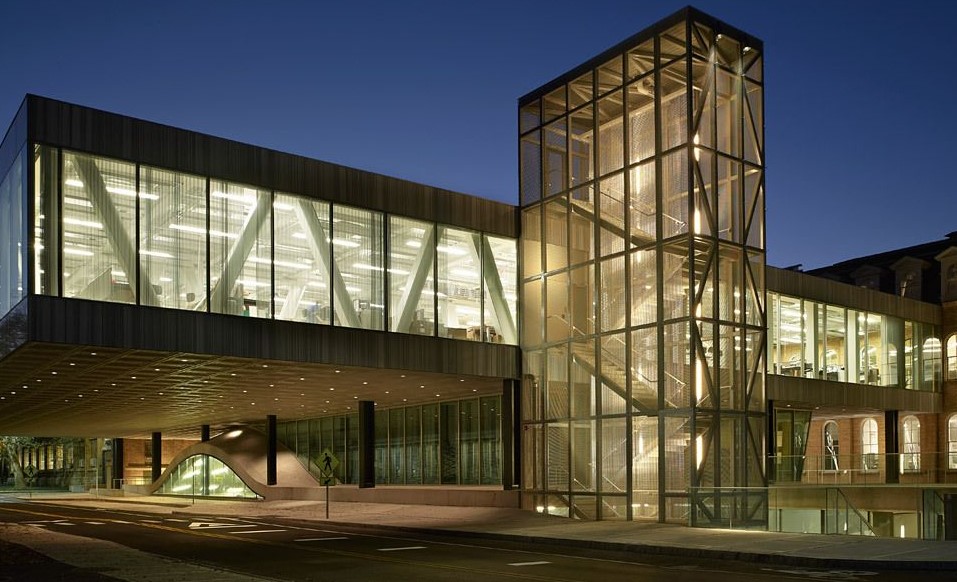
Architecture offers promising growth opportunities for those who continuously learn and develop their skills. There are several paths for career advancement within the architecture profession, including:
- Obtaining licensure: Becoming a licensed architect opens up opportunities for career advancement, such as taking on leadership roles in firms or starting your practice.
- Pursuing specialized knowledge: Architects can pursue technical expertise in sustainable design, historic preservation, or healthcare design, leading to new career opportunities and higher salaries.
- Advancing to management or leadership roles: Architects can progress to management or leadership roles within firms, which can involve overseeing multiple projects or teams.
- Pursuing academic or research roles: Some architects seek educational or research roles in universities or research organizations, which can involve teaching or researching new design technologies and strategies.
- Starting their practice: Architects can start their practice and be free to take on the types of projects they are interested in and build their brand.
Overall, the architecture profession can provide numerous opportunities for growth and advancement. Still, it requires a commitment to continuous learning and staying up-to-date with new technologies and trends in the industry.
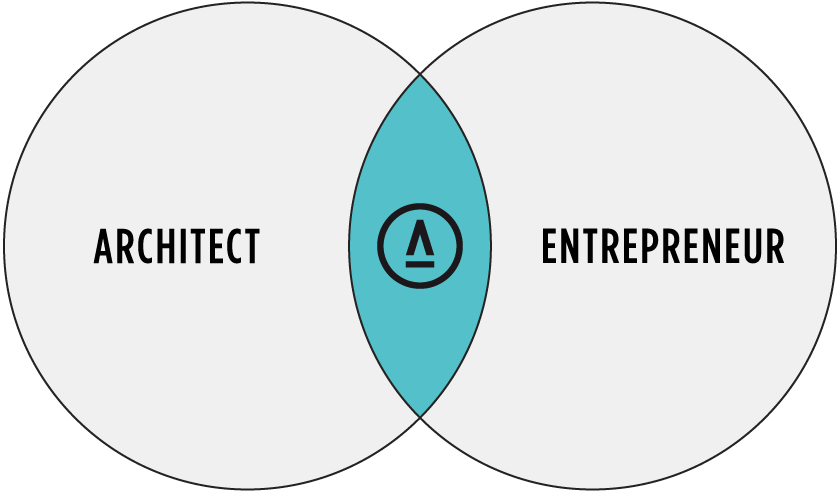
Architects are known for their creative and artistic abilities in designing beautiful and functional buildings, but they are also increasingly interested in the business and entrepreneurship aspects of their profession. As the architecture industry becomes more competitive and technology-driven, architects must develop a range of skills beyond design to succeed in the business world.
Architects who are interested in entrepreneurship are taking a proactive approach to grow their careers and building successful firms. They understand that business skills are essential for managing projects, attracting clients, and achieving financial stability. By developing an entrepreneurial mindset, architects can take advantage of new opportunities and stay ahead of the competition.
One key area of interest for architects is marketing. Architects who are skilled at marketing can effectively communicate their design vision to potential clients and stakeholders. They can also build their reputation and brand in the industry, which can lead to more business opportunities. Marketing can take many forms, from social media campaigns and website design to public relations and networking.
Financial management is another area of interest for architects who are interested in entrepreneurship. By understanding the financial aspects of running a business, architects can make informed decisions about project budgets, pricing, and cash flow. They can also develop strategies for managing risk and protecting their firm’s assets.
Project management is another area where architects can apply their business skills. Effective project management requires a range of skills, including communication, organization, and leadership. Architects who are skilled at project management can ensure that their projects are completed on time, within budget, and to the client’s satisfaction.
Finally, many architects are interested in innovation and technology. By keeping up with the latest advances in architecture and construction technology, architects can offer their clients cutting-edge solutions that are both efficient and sustainable. They can also leverage technology to streamline their business operations and improve their productivity.
In conclusion, architects who are interested in business and entrepreneurship are taking a proactive approach to build successful careers and firms. By developing a range of skills beyond design, including marketing, financial management, project management, innovation, and technology, architects can differentiate themselves in a competitive industry and offer their clients a range of valuable services.

Overall, an architect’s salary level has various factors playing a role, and architects must consider these factors when determining their earning potential.
The salary of an architect can vary widely depending on several factors, such as their experience, location, and the type of work they are engaged in. While some architects may earn lower salaries, there are several reasons why this may be the case:
- Supply and Demand: There are more architects than available positions, which can drive down salaries.
- Industry Competition: The architecture industry is highly competitive, and firms may be willing to hire less experienced architects at lower salaries.
- Project Budgets: Clients may have limited budgets for architectural services, which can result in lower fees for architects.
- Time and Effort: Architecture is a time-intensive profession that requires years of education and training. It can take a long time for an architect to become established and earn higher salaries.
- Public Perception: The public may not fully appreciate the value of architectural services, which can limit the amount that clients are willing to pay for them.
- Economic Factors: Economic downturns can also affect the demand for architectural services, reducing salaries in the field.
- Company Policies: No two firms’ compensation packages are alike. Choose a firm that wants to retain its employees over the long term and find a firm with good business acumen.
- Firm Size: Sole proprietors with one or two employees will deploy a different compensation package.
While architects certainly require artistic abilities to create beautiful and functional buildings, the success of an architectural practice also depends on its business acumen. Architecture firms must manage finances, attract clients, and navigate the legal and regulatory landscape like any other business.
Many successful architects are also skilled businesspeople. They understand how to market their services, manage finances, negotiate contracts, and navigate the industry’s complexities. They also have strong leadership and management skills, which are crucial for managing a team of professionals, overseeing multiple projects simultaneously, and building solid relationships with clients and contractors.
It’s worth noting that while artistic ability is a critical component of an architect’s skill set, it is not the only factor that determines their success. Good communication skills, problem-solving ability, attention to detail, and knowledge of technical requirements are also necessary. Additionally, architects must keep up with emerging technologies, sustainable design practices, and changing industry trends to remain competitive. In short, while artistic talent is essential to an architect’s skill set, successful architects must also have business acumen and leadership skills to thrive in their profession.
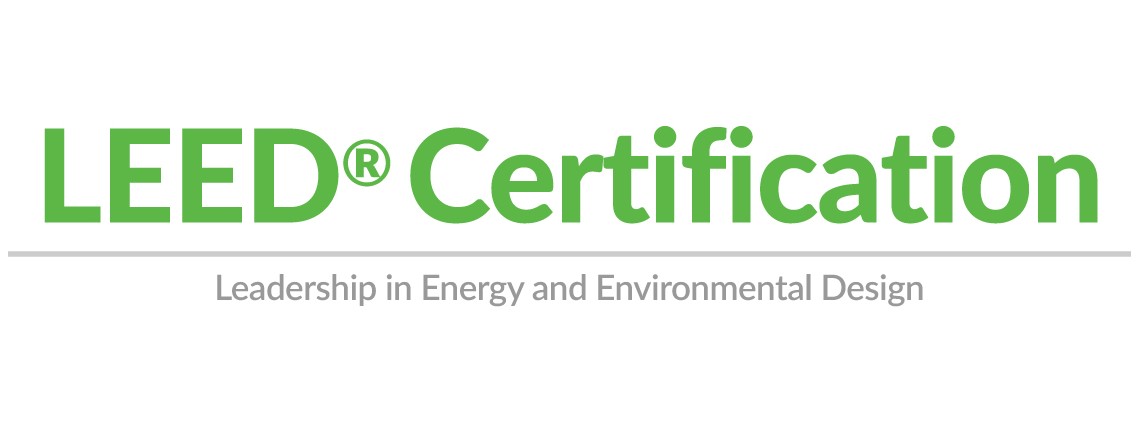
LEED (Leadership in Energy and Environmental Design) is a widely recognized and respected certification for environmentally sustainable building design and construction. Having a LEED credential can be valuable for architects and designers, as it demonstrates their knowledge and expertise in green building practices and can help them stand out in a competitive job market. Additionally, many building owners and developers are increasingly looking for professionals with LEED experience or certification, as it can help them meet their own sustainability goals and comply with local regulations. However, the value of a LEED credential may vary depending on the region and the specific market.
LEED (Leadership in Energy and Environmental Design) certified buildings are structures that have been designed, constructed, and operated in an environmentally responsible manner. They are designed to use less energy, water, and other resources, and to produce less waste and pollution. To become LEED certified, a building must meet certain standards set by the U.S. Green Building Council (USGBC), a non-profit organization that develops and maintains the LEED rating system.
LEED certification is based on a point system, with buildings earning points for meeting various sustainability criteria in categories such as energy efficiency, water efficiency, materials and resources, indoor environmental quality, and innovation in design. The building is then awarded a certification level based on the number of points earned: LEED Certified, Silver, Gold, and Platinum.
LEED certified buildings can include a variety of structures, such as office buildings, homes, schools, hospitals, retail spaces, and more. These buildings are designed to be more energy-efficient, use less water, promote better indoor air quality and reduce waste, and they provide a healthier, more productive environment for the people who use them.
There are several ways to find the best place to get LEED certified. Some steps you can take include:
- Research different training providers: Look for providers that offer LEED-specific training, have certified instructors, and provide study materials such as practice exams and flashcards.
- Look for providers with a good reputation: Check out online reviews and testimonials to get an idea of the quality of the provider’s training.
- Look for providers that offer different study options: Some providers offer in-person, online, or self-paced study options to fit your schedule.
- Check if the provider is authorized by the Green Business Certification Inc (GBCI) or other related bodies to deliver the training and the certification.
- Consider the cost and location of the training provider: Compare the costs and locations of different providers to find one that fits your budget and is convenient for you to attend.
- Look for providers that also offer continuing education hours for maintenance of the certification
It is important to keep in mind that LEED certification is a continuous process, in order to maintain the certification, the building must meet the standards of the certification level, and the certification holder must follow the continuing education requirements.
#LEED #Buildings #Certification #Certified #CBCI #USGBC #Architects #Designers
Helpful Links and Resources:
LEED Rating System
What is LEED Certification
Green Business Certification

In recent years, employees of architecture firms have increasingly attempted to join unions. This trend is driven mainly by the need for workers to protect and secure their rights as professionals. Unions provide a platform for employees to come together and negotiate fairer wages, better working conditions, and greater job security. Members can also access additional benefits such as legal advice, collective bargaining, and representation. Joining a union gives workers in the architecture field more control over their professional lives and helps to ensure that they are treated fairly and equitably by employers. As architectural firms continue to grow, the rights of employees must be protected and respected. Unions play an essential role in providing this protection, giving individuals the peace of mind that their rights and interests are protected.
By joining a union, architecture firm employees can help improve the industry. By negotiating better wages and working conditions, they can ensure that every professional in the field is treated fairly and compensated equitably for their work. The collective strength of union members also allows them to speak out against any injustices or exploitative practices they may experience, ensuring that their voices are heard and respected. With more people joining unions, the architecture industry is becoming safer and fairer for everyone involved.
Overall, union membership offers a range of benefits for employees in the architecture field. It gives them a platform to fight for their rights, negotiate better wages and working conditions, and ensure their voices are heard. By joining a union, they can help create a fairer and more equitable industry for everyone involved. As the architecture field continues to evolve, unions will remain essential to ensuring that workers’ rights are respected. But is it fools gold?
As architecture firm owners consider the implications of unionization, they must weigh the risks and rewards. Unionized firms face higher costs for labor, resulting in increased overhead that diminishes their competitive edge. Furthermore, collective bargaining agreements can restrict a firm’s ability to manage staffing levels and set salaries according to market conditions. Not being nimble can limit a firm’s ability to adapt quickly to changes in the industry, as well as its ability to attract and retain talented employees. Ultimately, these factors make unionization a less attractive option for many architecture firm owners. However, it is important to note that unions can bring tangible benefits, such as job security and improved wages and working conditions, which could appeal to some. Ultimately, it is up to individual owners to decide if unionization is the right choice for their businesses.
Architects are held to a high standard due to the critical nature of their work. They must possess excellent technical knowledge and communicate effectively with clients, designers, and contractors. As a result, they often require specialized training or certification to practice as professional architects. Despite this need for advanced skills and rigorous qualifications, architects are usually not eligible for collective bargaining, as many operate independently or in small firms and do not form unions. Thus, architects must advocate for their interests regarding workplace issues such as wages and working conditions. Architects must be aware of their rights and understand the profession’s regulations to ensure they receive fair compensation and working conditions. By doing so, architects can ensure they can continue practicing their craft in a healthy and productive environment.
Although architects traditionally do not form unions, they should still be aware of their rights and participate in the industry conversation around workplace issues. By doing so, architects can ensure they are compensated fairly and work in environments that promote their skillset and creativity. Architects must understand how their profession can benefit from unionization to better advocate for their interests.
It isn’t easy to find accurate statistics on how many architecture firms are unionized, as most are privately owned. However, there have been reports that suggest that under 3% of all architecture firms in the world and one firm in the United States may be part of a union or labor association.
Although becoming part of a union offers specific employee benefits, such as increased bargaining power and better wages, it can also be limiting in terms of flexibility. By joining a union, an architectural firm is subject to “just cause” guidelines regarding hiring and firing. Just cause means that there must be documented evidence that an employee is not meeting the standards of their position or has committed a punishable offense before they can be terminated. Therefore, it is complicated for an architectural firm to manage its workload most efficiently, as there may not be the flexibility to let go of employees quickly during times of low demand. Additionally, unions can restrict how many subcontractors or temporary workers an architecture firm can hire at any given time, limiting their ability to adapt to changing needs. Including dictating the workflow in contrast to increasing/decreasing staffing levels as needed. In addition, unions are not typically supportive of “at will” employment, which provides much more flexibility when hiring and firing.
Overall, unions can provide many benefits to architectural firms but also have certain restrictions that must be weighed carefully. Architecture firms must consider all their options before deciding on joining or not joining a union. Ultimately, the best solution will depend on each firm’s specific needs and goals.
For architecture firms that decide to join a union, there are measures they can take to ensure the best outcomes for their business. For example, firms should make sure they familiarize themselves with the rules and regulations of the union and negotiate any hiring or firing restrictions to ensure maximum flexibility when managing staff levels. Additionally, it is vital to understand the union’s grievance process and how disputes will be handled. Finally, firms should also consider creating a separate contract with the union that outlines their expectations for staffing levels and hiring and firing procedures.
By taking these measures, architectural firms can ensure that joining a union does not limit their ability to perform their work efficiently and effectively.
This information is for educational purposes and does not constitute financial, legal, or other professional advice. Please consult with a qualified professional if you require assistance.
Additional resources:
– New York Times: https://www.nytimes.com/2021/12/21/business/architects-white-collar-union.html
– The Real Deal: https://therealdeal.com/2022/09/01/new-york-firm-establishes-architectures-first-union/
– Architects’ Journal: https://www.architectsjournal.co.uk/news/do-architects-need-a-trade-union
– National Labor Relations Board (NLRB): https://www.nlrb.gov/
– American Institute of Architects (AIA): https://info.aia.org/join-aia/collective-bargaining-labor
– National Association of Architects (NAA): http://www.naahq.org/
– American Federation of Architects and Engineers: https://afae.org/
– Society of Professional & Executive Employers (SPEE): http://speeusa.org/
– U.S. Department of Labor: https://www.dol.gov/general/topic/labor-relations/labor-unions
– American Bar Association: https://www.americanbar.org/groups/labor_law/publications/aba_books/unionbargaining.html
– Harvard Law School: https://www.law.harvard.edu/news/labour/collective-bargaining-and-labor-unions/
– Cornell Law School: https://www.law.cornell.edu/wex/labor_union
– Bureau of Labor Statistics (BLS): https://www.bls.gov/opub/ted/2011/ted_20110429_data.htm
– Governing: https://www.governing.com/topics/workforce/unionizing-workers-collective-bargaining-rights.html
– National Labor Relations Board (NLRB): https://www.nlrb.gov/what-we-do/protecting-employee
Architecture Practice
|
architects, architecture, atwill, collectivebarganing, Consulting For Architects, David McFadden, design, firing, Hiring, jobs, Jobsecurity, justcause, salary, Trade, Unions, wages, workingconditions
|

















